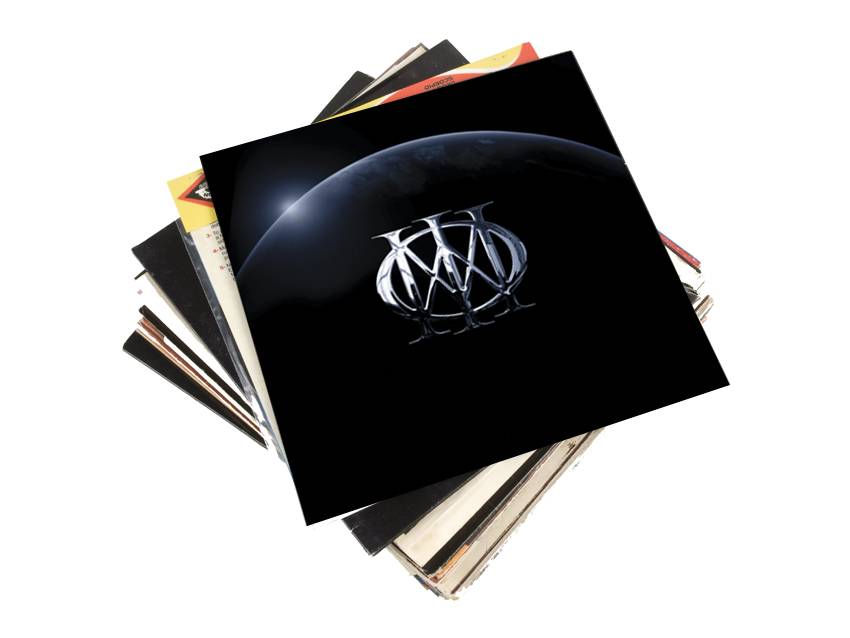
John Petrucci talks Dream Theater's self-titled new album track-by-track
In November of 1968, The Beatles released their ninth studio album, a self-titled, double-LP filled with strange, bold and beautiful music that refused to conform to any kind of accepted norm. What's remarkable about that album – what we know about it now, at least, in hindsight – is that it was the sound of collective solo artists, a band in name only, one that was in the process of falling apart.
This month, on 24 September, Dream Theater, 11 albums and 27 years into their career, will release a self-titled album, and it, too, is packed with strange, bold and beautiful music – nine songs brimming with volcanic and dynamic energy but also a subtle sense of mystery and spellbinding charm. But the key distinction here is that this is a band that almost fell apart but didn't. This album is the sound of a band coming together.
"On our last album, A Dramatic Turn Of Events, we had a lot to prove," says guitarist John Petrucci, referring to the late 2010 split by founding member and drummer Mike Portnoy. "We were put under the microscope on that record. There were a lot of questions in the air. But the success of that album and the tour that followed really energized us, and we felt like a new band again. We took all of that positive energy into the recording of the new album."
The decision to go with an eponymous title is usually arrived at late or at the end of a recording process, but the members of Dream Theater (Petrucci, vocalist James LaBrie, keyboardist Jordan Rudess, bassist John Myung and not-so-new-guy-anymore, drummer Mike Mangini) made their call before a lick of music had been tracked. In fact, the name of the album helped shape their music. "When we chose to call it Dream Theater, we knew we had to make the kind of record that warranted a self-title," Petrucci says. "We were intent on making something that looks back on and respects our past, but it also pushes us forward in a very passionate and fiery way."
In addition to picking a title, Petrucci, who produced the record, sat down with the band to map out an agenda. "Before we set foot in the studio, we talked about the kind of record that we wanted to make," he says, "and I put together a proposal outlining my thoughts. One of my jobs is to corral the team and build a plan: Who’s the engineer? Who’s our mixer? Where are we going to do it? It’s all part of formulating what direction the record should take."
As was the case with A Dramatic Turn Of Events, the band recorded at Long Island's Cove City Studios, beginning in January and continuing into the spring. Significant and profound differences were the addition of engineer and mixer Richard Chychi, who had worked with the band before but never in such a sustained capacity, along with the fact that Mike Mangini was now a fully integrated creative member of the quintet. "Mike was with us from day one," says Petrucci. "There he was with his big drum kit from the tour, ready to write, ready to work. The level of commitment and brilliance he brought to this record is remarkable."
According to Petrucci, Mangini's ability to respond intuitively to the new material was a constant joy to behold. "Mike did so many off-the-cuff things that were just astounding" the guitarist raves. "We would be working on a piece of music, and he would be sitting there listening, maybe playing along a little bit. Then when we’d go to play it all together, we’d ask him if he had any ideas, and he’d let loose with the most ridiculous, sickest thing you’d ever heard. It was like, ‘Where did that come from?’ [Laughs] A lot of times we kept what he did. We’d be like, ‘That’s it. Don’t even think about it any further.’”
Petrucci is no less effusive in his praise of the veteran DTers: "James constantly blew me away with his vocal performances. Every time I heard something he did, it was better than anything I could have imagined. Jordan never ceases to amaze me. His creativity is so inspiring. And John Myung always comes up with the perfect parts and these home-run riffs right when you need them. Everybody pushed themselves in pretty remarkable ways. And the great thing is, we had fun, too. There were a lot of laughs, glasses of wine with meals, all of the usual bonding stuff that happens when a band is in a good place. It felt really special."
For close to 30 years now, Dream Theater have reigned as something of the gold standard for instrumental excellence, and to be sure, there are moments – too many to count, in fact – of musicianship on Dream Theater the album that could qualify for landmark status. But there's another kind of benchmark they've hit here as well: They've never sounded so passionate, so alive and so unified. A Dramatic Turn Of Events was a powerful and convincing statement by a band refusing to give up their dreams. The new album is solid proof that they've hatched new ones.
Dream Theater will be released on 24 September. You can order a Limited Edition Collector's Box Set at this link. On the following pages, John Petrucci walks us through the writing and recording of the album track-by-track.
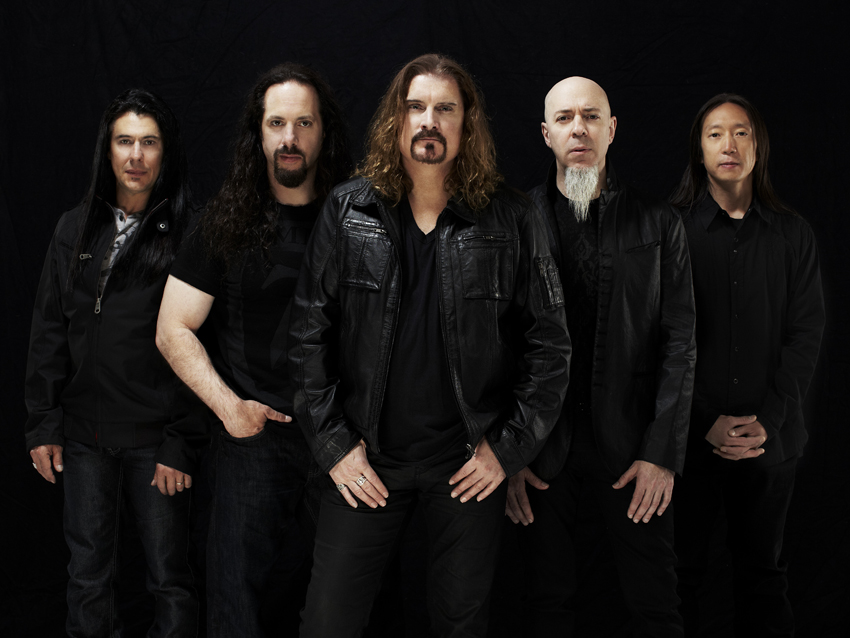
False Awakening Suite
“The purpose of this one is to serve as an opening to our show. When the lights dim and you hear a piece of intense cinematic music – in the past, we’ve used things like Inception and Psycho – it’s such a great way to bring the band on stage. We’ve been doing that for a long time.
“This time, we decided to write our own version of that. I had an idea of the length it should be and put together some examples of music that it should be like, and then Jordan and I got together to work on it. He had his synth set to a big symphonic sound. I remember saying, ‘Try something that’s like Star Wars,’ meaning something royal and ominous. He’d go through some things, we’d come up with the final part, and then he’d play it into Logic. We built it one step and one section at a time like that.
“We did the same thing with all of the sound effects you hear. Jordan laid all of that in with his sound effects libraries. We did the whole thing to a click in one night, in just a few hours. It was almost a disaster, though: We nearly lost the whole thing when Jordan’s computer crashed. We were able to retrieve it, but it took a lot to get it back. I’ll tell you, it was really scary for a while there. [Laughs]
“So that was the template. Once we had that down, I learned the parts on guitar, broke it up and figured out what I wanted to play – what I wanted to double or play as rhythm or whatever. We did that with every instrument – each guy layering his approach section by section – but we never actually played it together as a band.
“In the end, it has real strings on it. Some the of the stuff Jordan did remained – he redid it with better sounds and samples – but then we also used real strings to play the whole piece. It was a really fun project.”
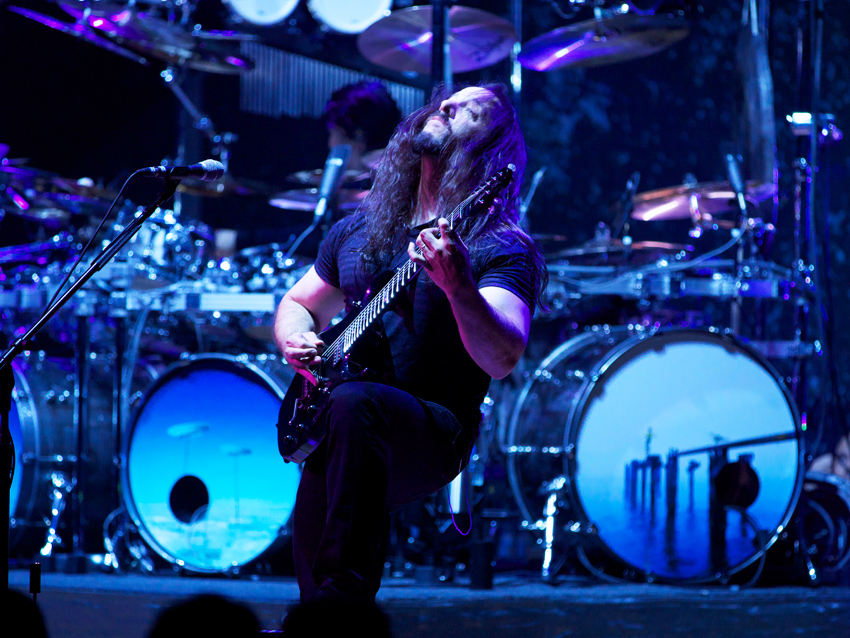
The Enemy Inside
“This is part of a group of songs that we discussed before going into the studio, the idea being that there would be some tracks in the four-, five- and six-minute range. We didn’t want an album with only four songs on it where everything’s 14 minutes long. It was important to have some variety, like on the Awake album, which had songs in the five- and six-minute range.
“The Enemy Inside is a great example of a song that hits you, it doesn’t meander, and it has all of the compositional elements that make us unique. It has the metal parts, the prog parts, the solos, interludes, choruses – it’s all there, but in a more concise way that packs a powerful punch.
“I wanted to write a fast-moving song on the seven-string with a big riff, a huge chorus and really fast, angular movements. The irony is that we never intended for it to be a single, but it just kind of hooked everybody from the beginning. I always thought it would be a deeper cut on the album, more technical and fast, sort of a Panic Attack vibe. But it just turned out to be really catchy.
“There’s a bunch of different parts to the solo. I try to always keep it interesting, and I want everything to have a musical purpose. The solo comes in a little late; it goes right into the final chorus. It was sort of my job to come out of the previous vocal and get us to the end.
“There’s an open G string thing that I do, with a big intervallic skip from these high fretted notes to the G – it goes back and forth in a kind of piggyback thing. So I’m playing two high-fretted notes and then open G, then two high notes lower on the neck and open G. Then I play two high notes, higher than the second two but lower than the first two, and then open G. It sounds pretty cool when you do it all together.”
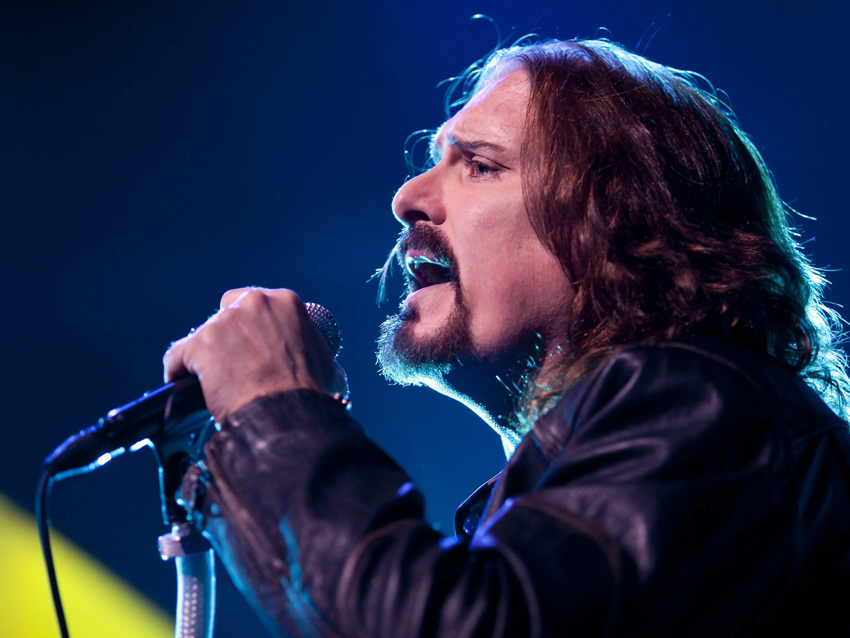
The Looking Glass
“The song is definitely a tip of the hat to Rush. We’re such fans – they’ve been a huge influence on us, and we continue to admire and look up to them. One of the great things about them is how they write really uplifting songs with positive messages, but they always sound cool.
“It’s really interesting. The Spirit Of Radio, Limelight – those are big, big songs with big arena-rock riffs in a major key. Even Free Will has that. The songs aren’t dark, but they’re tough. It’s really hard to write something that can cut both ways like that, but that was my goal.
“The Looking Glass has a few different stylistic changes: There’s the Rush arena-rock major riff, but the verses are tricky as far as time signatures, and the style is a little darker. The pre-choruses are very pretty and flowing – they're in half-time – and the choruses open up and get really hooky. From verse to pre-chorus to chorus to riff, you’ve got a lot of musical styles, and that helps to keep things interesting.”
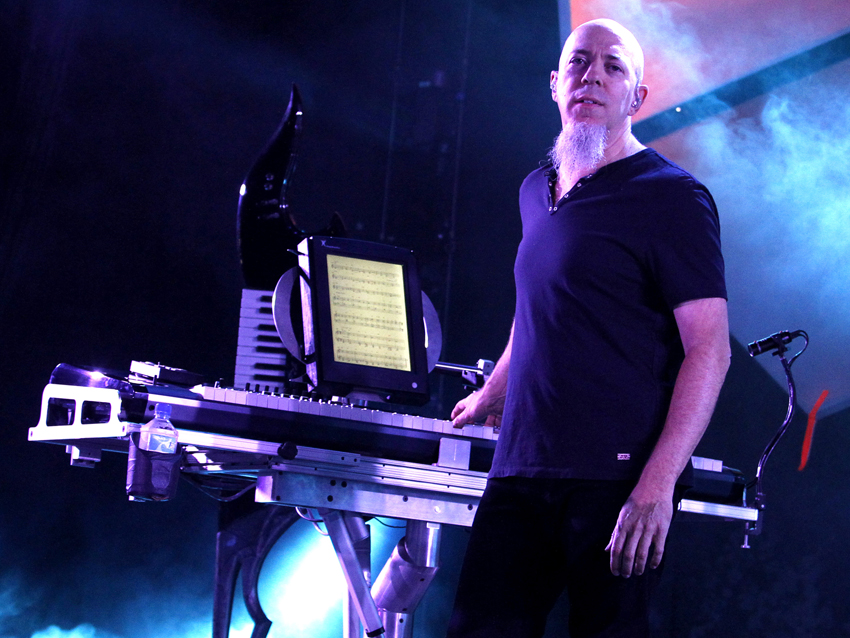
Enigma Machine
“As part of our initial discussions, we said that we should do an instrumental. We haven’t done one since Stream Of Consciousness on Train Of Thought, so it felt like the time was right. It’s part of our thing, it’s who we are, and we just love stretching out and playing instrumentals.
“Rich got all of the sounds on the album pretty much like you’re hearing them – it was all in the first week – so as we would write and play, it wound up not sounding like a demo; it sounded like the album. When we finished a so-called scratch version of this song – and I use that term hesitantly, because a lot of the stuff we did ended up as the keeper tracks – we played it for James, and his reaction was priceless: ‘Oh, my God! That’s freakin’ amazing!’ He’s a huge fan of that side of our band and is a big advocate.
“There’s several different solo sections on the guitar. Sometimes it gets a bit compositional, where there’s a tricky, weaving chord progression. There’s a guitar key harmony-unison thing that was really composed section by section. But as far as the solos that have more of an improvised feel, what goes through my mind, again, is that I need to keep it interesting.
“Jordan are I are trading here: He does a solo, then I do one, he does an iPad solo, and I do another one. I like to mix up the techniques from one to the next so that you're constantly seeing another color. And Jordan gets some really cool sounds, too.
“What’s great about it is, it moves along and never meanders. This isn’t us doing a mathematical exercise; it’s us saying, ‘Hey, let’s get together and write a really awesome song.’ It has a spy-theme motif, which is why I called it ‘Enigma Machine.’”

The Bigger Picture
“The main theme at the very beginning, which is also the chorus, stemmed from another song – it might have even been The Enemy Inside. That song had a lot of parts originally, and arranging them required some rewrites, pulling things out and shifting them around. As we were writing it, we had the song break down into this whole other section, and that became The Bigger Picture.
“To me, this is one of the more melodic songs on the album, and it shows off our prettier musical side – you hear that on songs like Surrounded. There’s a certain musical chemistry that Jordan and I have – even back when we were working on Liquid Tension Experiment – and I really hear it on the verses of this song. It’s so beautiful to me. Our stuff doesn’t always have to be dark and mysterious.
“The song is a great centerpiece of the album. It breaks up the flow and gives you a chance to kind of collect your thoughts, almost as if you were watching a movie: You had your opening; you were excited by the first few scenes, which got you into the story; and then there’s this big, cool, character-changing part, which is The Bigger Picture. After that is the rest of the movie. Even though this isn’t a concept album, it moves along in much the same way.
“There’s a particular kind of ostinato part that allows the song to build, especially when you hear the chord changes moving by. I love playing that role – it’s definitely a Pete Townshend thing to do. There’s also a moment in the song where I play a melody – it’s not really a guitar solo – and on the repeat, a harmony line comes along. That’s a good example of us keeping something as it was written. It had a very soulful feel to it, and after I did it I thought, ‘You know, it’s not going to get any better than that.’ There was no reason to overthink it.”
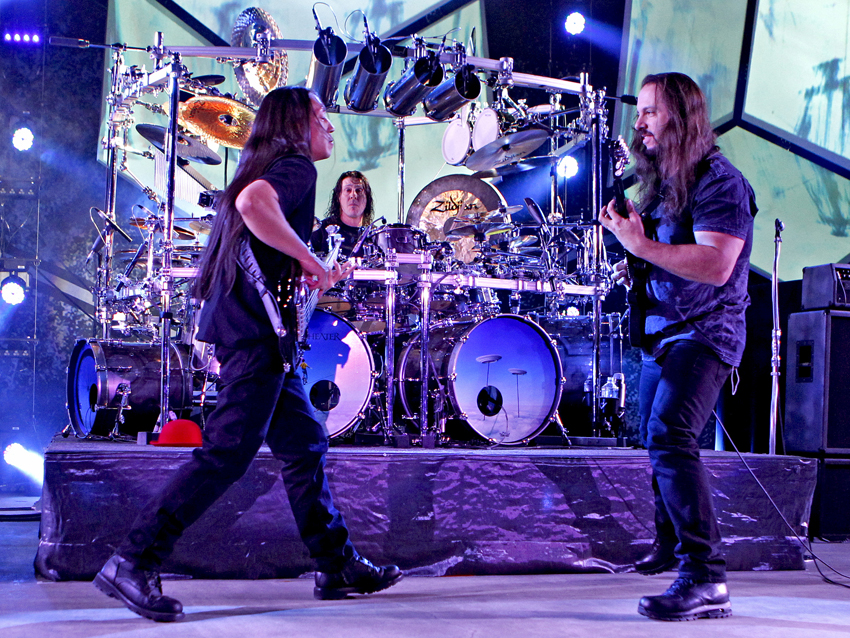
Behind The Veil
“There’s the main riff that you hear on the left speaker – that’s a good example of me saying to the guys, ‘Let me have a little time here. I just want to crank my amp up really loud and come up with a driving guitar riff.’ Sometimes you just have to put yourself in that kind of environment.
“The song is centered around a chord progression that you hear Jordan play before the band comes in. Once the band does kick in, you hear it in an almost Metallica-ish way, and then you hear it when the bass is leading, and after that it’s in the choruses. There’s a lot of thematic repetition with the chord progression that you hear in the choruses.
“It’s another song that captures all of the elements we like to feature: the metal, the instrumental-prog, great synth moments with Jordan, big choruses with a really good hook, the guitar solo – all of it in a format that will hopefully leave you wanting more.”
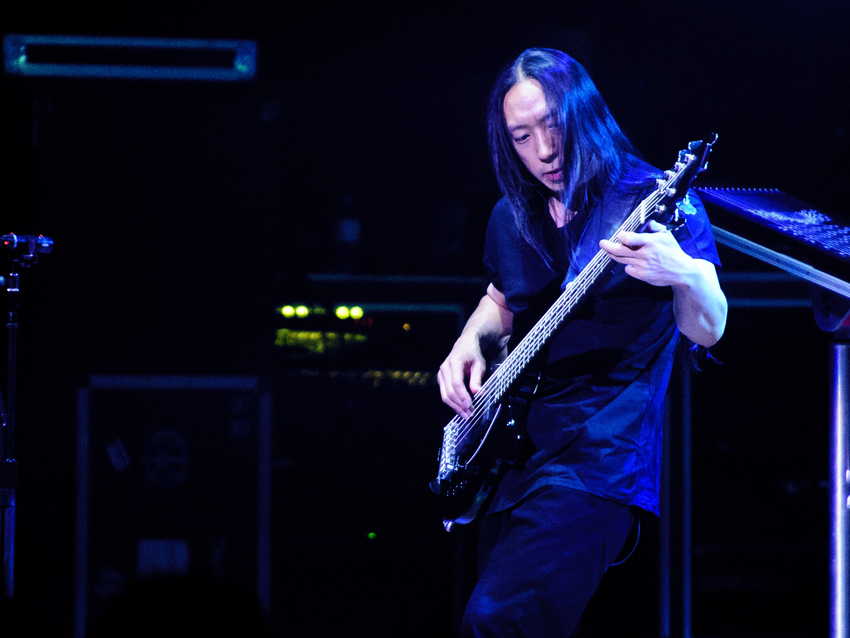
Surrender To Reason
“This was the first song that we wrote together for the album, so it’s really special to us. You know, we had our discussions, and we even had a meeting in the studio, but then it finally came down to us standing there with our instruments and looking at one another: ‘OK, let’s go!’
“I had the idea for an acoustic in the opener, but on the initial scratch versions I played a clean-sounding electric. Rich was a big fan of the electric, but I told him, ‘I really hear a 12-string there. Trust me, it’ll be cool.’ It almost went the other way, but in the end I put a Taylor 12-string on it.
“It has one of my favorite moments on the album, where John digs into a bass part. He has so much attitude and aggression – it’s great. Once the guitar solo starts, we’re back to trio land – again, harkening back to Rush. It reminds me of something like Working Man off their first album, just that raw bass, drums and guitar, with everybody going for it. The guitar has no delay and no reverb – it’s just dry, in your face, with a flanger on it. It’s one of the more aggressive, fun moments on the album.”
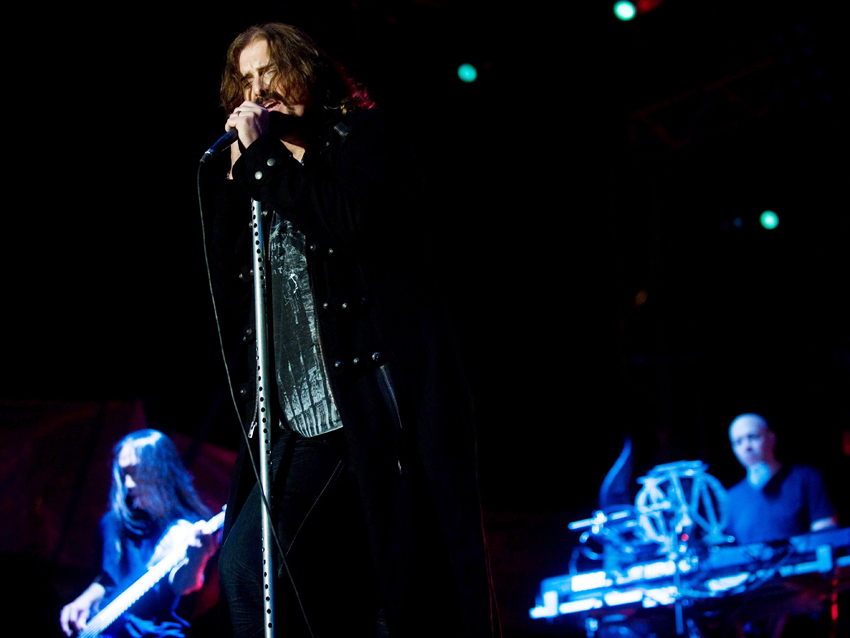
Along For The Ride
“I had started to write the words to this one before the music, which is something I don’t do too often. I was sitting in my car, waiting to pick up my daughter at school, and while I looking out the window I got hit by that term “along for the ride.”
“I went home, picked up the guitar and pretty much wrote the themes, the choruses and the bridge to the song. So it was the only song that really existed prior to going into the studio – in a way that I could play it and sing it for the guys.
“Having said that, it really wasn’t complete until we got in there and worked out an intro and a bridge. But my idea all along was, 'Guys, I want a song that’s anthemic.' I wanted something that people could sing along to, waiving their phones and lighters in the air – that whole feel-good vibe.
“It partially has that loose, flowing, kind of hippie-ish Grateful Dead feel. At the same time, as a contrast, I had completed the lyrics after the Boston bombings, which happened while we were in the studio. The whole bridge about not living our lives afraid and not being shattered – that tied in with the overall theme.
“And no guitar solo. You know, there’s a lot of guitar solos on the record, so I can’t hog all the space. [Laughs] Even when I was writing it at home and it went into where the keyboard solo starts, I thought it was more ELP. Jordan did a great job of pulling off an improvised solo. It’s Lucky Man-esque, the sounds that he gets. It’s really something.”
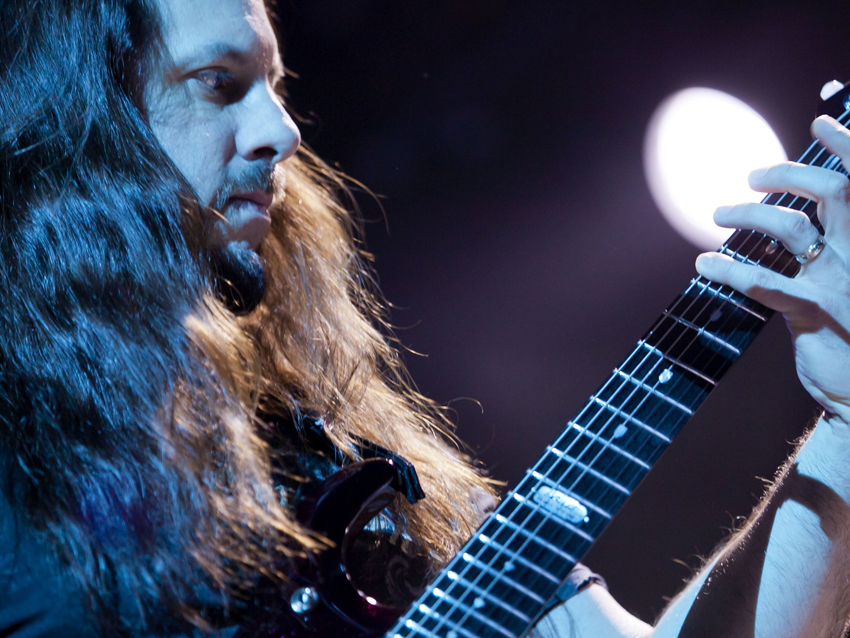
Illumination Theory
“The movements are named after the fact; that all comes as I’m writing the lyrics. We might feel as though there are certain movements, but we’re not defining them, like, ‘Here’s where they begin and end.’
“Going into it, we have it in our heads that we’re going to write a 20-minute-ish song like this. That way, everybody can be on the same page. One guy doesn’t think we’re writing an intro piece, and another guy doesn’t think we’re doing a five-minute piece – we're all on board.
“The second thing is, we have a vision as to the flow of the song and the bigger picture – pardon the pun – of the song. It starts out with a theme, which actually was a part of The Enemy Inside – this was something I had written a few years ago in Japan. Having that part at the beginning sort of sets the mood, like, ‘All right, this is gonna be an epic.’
“We also had an idea that we know would be a great end piece because it had that kind of vibe to it. It’s a part hat we had written in another part of Asia during the Dramatic Turn Of Events tour. I had archived it, but I remembered that it would make a really great climax to one of our songs. So you have the beginning and the end.
“The middle part, where everybody fades away, and then you have the whole atmospheric thing and then the sound effects, that was also planned out. The idea was to make a big song that doesn’t have a crazy instrumental part in the middle; rather, it does the exact opposite and there’s no band members. It leaves you time to reflect, but then it fools you: It gets nice and dreamy, and then it punches you in the face when the next part comes in with the bass and drums group.
“That beginning, middle and end was all mapped out, and then we had a bunch of other ideas that we had either jammed on or archived, all of these different seeds and pieces. Having the ability to step back and see the flow of the song before it was done really helped with the overall success of the piece.
“I have a bunch of solos, and they all have different purposes. There’s one sort of in the middle where the guitar is really featured; that’s a good example of a seed that I had one day, I wrote it and recorded it on my iPhone, and I archived it and said, ‘If we need a really cool guitar passage, I’m gonna use this.’ It’s a very composed, technical part that weaves in and out of specific chord progressions.
“Then there’s a more jamming-type solo that’s in the 6/8-like big Queen groove thing – again, Jordan and I are trading. That’s when I just busted out the wah-wah and did the no-holds-barred thing, more raw, more obnoxious, more rock ‘n’ roll.
“In the ending, it’s a whole different mindset. My job is to be the final thing you hear on the album, and I’m going to carry it off into the sunset. I wanted to make it big melodically and have the kind of climax where you really felt things came to a definite point. I’m so happy at how this piece turned out. We’re all pretty proud of it.”

Joe is a freelance journalist who has, over the past few decades, interviewed hundreds of guitarists for Guitar World, Guitar Player, MusicRadar and Classic Rock. He is also a former editor of Guitar World, contributing writer for Guitar Aficionado and VP of A&R for Island Records. He’s an enthusiastic guitarist, but he’s nowhere near the likes of the people he interviews. Surprisingly, his skills are more suited to the drums. If you need a drummer for your Beatles tribute band, look him up.
"Reggae is more freeform than the blues. But more important, reggae is for everyone": Bob Marley and the Wailers' Catch a Fire, track-by-track
“Part of a beautiful American tradition”: A music theory expert explains the country roots of Beyoncé’s Texas Hold ‘Em, and why it also owes a debt to the blues
"Reggae is more freeform than the blues. But more important, reggae is for everyone": Bob Marley and the Wailers' Catch a Fire, track-by-track
“Part of a beautiful American tradition”: A music theory expert explains the country roots of Beyoncé’s Texas Hold ‘Em, and why it also owes a debt to the blues









